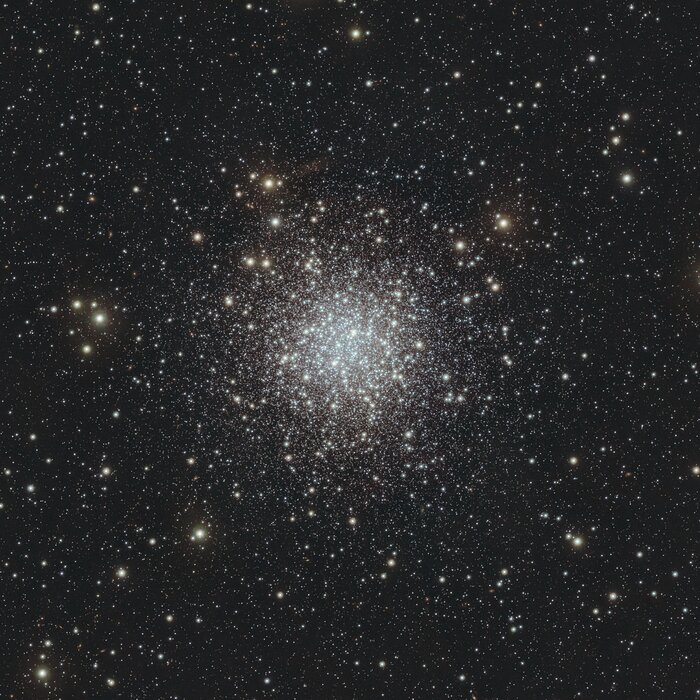It’s full of stars!
This Picture of the Week — taken with ESO’s Visible and Infrared Survey Telescope (VISTA) at Paranal Observatory in Chile — might look like a scene from a snowy winter's night, but it’s not. It’s an infrared image of NGC 6723, a globular cluster located about 28 000 light years from Earth in the constellation Sagittarius. Globular clusters are spherical-shaped groups of stars, tightly bound together by gravity. Their name is derived from the Latin word globulus, meaning small sphere — somewhat misleading given that NGC 6723, as most globular clusters, contains hundred of thousands to millions of stars.
So far, astronomers have found more than 150 globular clusters in our galaxy, the Milky Way, with most of them estimated to be at least 10 billion years old and hosting some of the oldest stars in the galaxy.
Globular clusters were key to pinpointing our own location within the Milky Way in the early 20th century. American astronomer Harlow Shapley measured the distances to several globular clusters, and noticed that they were arranged in a roughly spherical distribution, but the Sun was not at its centre. He correctly inferred that the heart of the Milky Way lays at the centre of this distribution of globular clusters, placing the Sun in the suburbs of the galaxy.
Źródło:ESO/S. Meingast et al.
O zdjęciu
| Identyfikator: | potw2333a |
| Typ: | Obserwacje |
| Data publikacji: | 14 sierpnia 2023 06:00 |
| Rozmiar: | 2651 x 2650 px |
O obiekcie
| Nazwa: | NGC 6723 |
| Typ: | Milky Way : Star : Grouping : Cluster : Globular |
| Constellation: | Sagittarius |
| Kategoria: | Star Clusters |
Współrzędne
| Pozycja (RA): | 18 59 32.93 |
| Pozycja (Dec): | -36° 38' 1.58" |
| Pole widzenia: | 14.73 x 14.72 arcminutes |
| Orientacja: | North is 0.3° prawo of vertical |
Kolory i filtry
| Pasmo | Długość fali | Teleskop |
|---|---|---|
| Podczerwony J | 1.25 μm | Visible and Infrared Survey Telescope for Astronomy VIRCAM |
| Podczerwony H | 1.65 μm | Visible and Infrared Survey Telescope for Astronomy VIRCAM |
| Podczerwony Ks | 2.15 μm | Visible and Infrared Survey Telescope for Astronomy VIRCAM |

